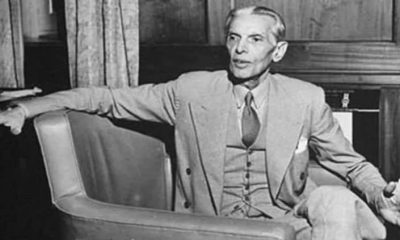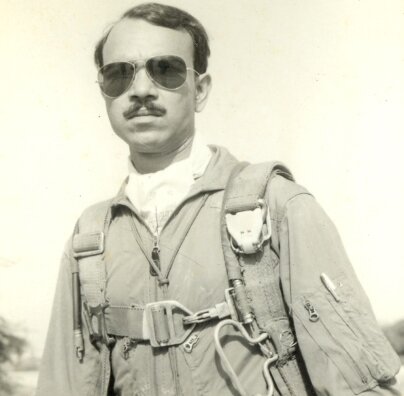Article
The Strugglers in Pakistan Movement
Fariyal Mir
Published
2 months agoon

Pakistan movement was never a game of play and win but it holds a full-fledged history of struggle and sacrifices. The patriotic leaders have lost many things to gain independence. They made their lives hell to settle us in the piece of paradise named Pakistan. They left their homes to build a new and safe land for us. They have flowed their blood like water to get green Pakistan. They have struggled so hard and no one can do like them. We need to respect this land and we should have to tribute them with every single minute.
Sir Syed Ahmad Khan; The Pioneer of Independence Struggle
Sir Syed Ahmad Khan is one of the greatest names among Muslim philosophers. He was in 1817 in Delhi and passed away in 1898. In this frame of his life, he has contributed immensely and generously. He has been marked as a Muslim educator, jurist, author, and founder of the Anglo-Mohammedan Oriental College at Aligarh which became the intellectual cradle of the Muslim League and later Pakistan. Aligarh was founded in 1875 and it was the first college in India in which Islamic and Western higher education instructed in English. The forecaster Sir Syed started his career as a clerk with the East India Company in 1838 and later served in the judicial department at different places. He was a religious sort of person and had written on many religious topics like “Life of Mohammed” (1870). The forecaster Sir Syed had focused on Education and had established schools at Muradabad (1858) and Ghazipur (1863). He aimed to educate the whole by any means and for that he founded the Scientific Society which published a translation of different educational texts both in Urdu and English.
He was working for the united sub-continent but the event at Benares altered everything. In 1867 a movement was started in Benares to replace Urdu with Hindi which was never acceptable for Sir Syed. And this movement turned the point and persuaded Sir Syed that the paths of the Hindus and the Muslims must diverge. After that, he worked for only Muslims and tried to bring social reform through his influential journal Tahdhib al-Akhlaq (“Social Reform”). After his retirement, he served in the college and made rapid progress. One of his major contributions was the organization of the All-India Muhammadan Educational Conference in 1886. This conference was to be held every year to gather Muslims in one platform till the foundation of the Muslim League in 1906. He always advised Muslims to get an education and to abstain from politics.
He is the true name in the struggle for independence and we tribute him on the coming 74th anniversary of our independence.
You may like
-
“Revive the spirit of Khudi — awaken the sleeping soul of the nation.”
-


A name written in the heart of every Pakistani — Dr. Abdul Qadeer Khan.
-


.
-


77th death anniversary of Quaid-e-Azam being observed today
-


“In the honor of their sacrifice, we stand united – Shuhada-e-Pakistan Ko Aik Qaum Ka Salam.”
-


A Tribute to Maj. Adnan Aslam – A Soldier’s Eternal Legacy
Article
“Steel Against Steel: Pakistan’s Resolve at Chawinda!”
Published
1 month agoon
September 8, 2025By
EDITOR
The Battle of Chawinda, one of the largest tank battles since World War II, is a significant chapter in the history of the 1965 Indo-Pak War. Fought near the town of Chawinda in the Sialkot sector of Pakistan, this battle stands as a testament to the strategic brilliance, resilience, and courage of the Pakistan Army in defending its territory against a much larger Indian force. Central to this battle was the tactical ingenuity displayed by Pakistani forces in countering and neutralizing the Indian tank offensive, which played a crucial role in the eventual stalemate.
Background
- Date: September 8 to September 22, 1965
- Location: Chawinda, near Sialkot, Pakistan
- Opposing Forces:
- Pakistan: 6th Armoured Division, 1st Armoured Division, and supporting infantry and artillery units.
- India: I Corps, 1st Armoured Division, 6th Mountain Division, and additional armored brigades.
- Objective: The Indian objective was to penetrate deep into Pakistani territory through the Sialkot sector, cutting off the Grand Trunk Road and advancing towards key Pakistani cities. Pakistan aimed to halt the Indian advance and protect Sialkot and surrounding areas.
The Indian Tank Offensive
India launched its offensive with a formidable force of tanks, including Centurion and Sherman tanks, supported by infantry and artillery. The plan was to exploit the flat terrain of the Sialkot sector, which was ideal for armored warfare, and overwhelm the Pakistani defenses with sheer numerical superiority. The Indian strategy relied heavily on the speed and firepower of their armored units to break through Pakistani lines and achieve a decisive victory.
Pakistani Response: Tactical Brilliance
Despite being outnumbered and facing a more powerful adversary, the Pakistan Army displayed remarkable strategic and tactical acumen in countering the Indian offensive.
1. Defensive Positioning:
- Pakistani forces, anticipating the Indian armored thrust, had prepared strong defensive positions around Chawinda. The terrain was carefully utilized to create choke points, where Indian tanks could be funneled into kill zones covered by anti-tank guns and artillery.
- Pakistani troops made effective use of natural and man-made obstacles to slow down the Indian advance, forcing the Indian tanks to engage in a frontal assault under less-than-ideal conditions.
2. Artillery and Anti-Tank Warfare:
- Pakistan’s artillery played a crucial role in blunting the Indian offensive. Well-coordinated artillery barrages targeted Indian tank formations, causing significant damage and disrupting their momentum.
- The use of recoilless rifles and anti-tank mines proved effective in neutralizing the Indian tanks. Pakistani soldiers, often in small teams, engaged Indian tanks at close range, exploiting weaknesses in their armor.
3. Infantry-Tank Coordination:
- The Pakistani infantry worked closely with their armored units, providing support and covering fire, which allowed the tanks to maneuver and engage the enemy effectively. The close coordination between infantry and armor was a key factor in the success of the defensive operations.
- Pakistani tanks, although fewer in number, were used in concentrated counterattacks at critical junctures. These counterattacks, supported by infantry, disrupted Indian tank formations and prevented them from gaining the initiative.
4. Night Operations and Ambushes:
- Pakistani forces employed night operations and ambush tactics to harass and weaken the Indian tank units. Under the cover of darkness, Pakistani troops launched surprise attacks on Indian positions, inflicting casualties and causing confusion.
- The use of night attacks and hit-and-run tactics kept the Indian forces off balance, preventing them from consolidating their gains and forcing them to remain on the defensive.
5. Psychological Warfare:
- The resilience and determination of the Pakistani soldiers played a crucial role in breaking the morale of the Indian forces. Despite heavy bombardments and relentless assaults, the Pakistani defenders held their ground, leading to a growing sense of frustration and fatigue among the Indian troops.
- Propaganda and misinformation were also used effectively to create uncertainty and hesitation within the Indian ranks, further undermining their offensive capabilities.
Outcome and Significance
The Battle of Chawinda ended in a stalemate, with neither side able to achieve a decisive victory. However, the battle is widely regarded as a strategic victory for Pakistan, as it successfully halted the Indian advance and prevented a major breakthrough in the Sialkot sector.
- Casualties and Losses:
- Both sides suffered heavy casualties, with significant losses in men and material. Indian tank losses were particularly severe, with a large number of tanks destroyed or damaged during the battle.
- The Pakistani forces, despite their smaller size, managed to inflict disproportionate losses on the Indian Army, demonstrating the effectiveness of their defensive strategy and tactical ingenuity.
- Legacy:
- The Battle of Chawinda is remembered as a symbol of Pakistani resilience and military skill. It showcased the importance of tactical innovation, effective use of terrain, and the critical role of morale and leadership in modern warfare.
- The battle also highlighted the limitations of armored warfare in the face of determined and well-prepared defenders, challenging the conventional wisdom that tanks could achieve quick and decisive results on the battlefield.

Muhammad Mahmood Alam, often referred to as M.M. Alam, was a legendary Pakistani fighter pilot who gained fame during the 1965 Pak-Indo War. He is celebrated for his exceptional skills and courage in combat, particularly for downing five Indian Hawker Hunter fighter aircraft in a single dogfight in less than a minute. This remarkable achievement earned him the nickname “Little Dragon” and solidified his reputation as one of Pakistan’s most celebrated fighter pilots.

M.M. Alam’s extraordinary feat of shooting down five enemy aircraft in such a short span of time is still regarded as one of the most significant accomplishments in aerial combat history. He was an inspiration to generations of Pakistani pilots and remains a symbol of bravery and skill in the Pakistan Air Force’s history.
While the term “Top Gun” is often associated with elite fighter pilots, it’s essential to note that M.M. Alam achieved legendary status not only within Pakistan but also on the international stage due to his exceptional combat performance. His legacy as a real-life “Top Gun” endures in the annals of aviation history
M.M. Alam’s Aircraft: The F-86 Sabre and the Indian Hawker Hunter
M.M. Alam’s Aircraft: The F-86 Sabre
1. Overview:
- Type: Fighter aircraft
- Manufacturer: North American Aviation
- Role: Air superiority fighter and ground attack
- First Flight: October 1, 1947
- Introduced: 1949
- Primary User: United States Air Force (USAF), also used by Pakistan Air Force (PAF) and various other air forces globally
2. Design and Features:
- The F-86 Sabre was a transonic jet fighter aircraft that became one of the most prominent American fighter planes during the Korean War and throughout the early Cold War period.
- Engine: Powered by a General Electric J47 turbojet engine, capable of producing about 5,200 lbf of thrust.
- Speed: The Sabre could reach a top speed of approximately 687 mph (Mach 0.9), making it one of the fastest jet fighters of its time.
- Armament: The aircraft was equipped with six .50 caliber M3 Browning machine guns mounted in the nose. It could also carry bombs and rockets for ground attack missions.
- Maneuverability: The Sabre’s swept-wing design contributed to its excellent maneuverability at high speeds, which was crucial during dogfights.
- Combat Role: The F-86 Sabre was primarily designed for air-to-air combat but was versatile enough to perform ground-attack missions. Its agility and speed made it a formidable adversary in dogfights, particularly against Soviet-built MiG-15s during the Korean War.
3. M.M. Alam and the F-86 Sabre:
- During the 1965 Indo-Pak war, M.M. Alam flew the F-86 Sabre and achieved extraordinary success in aerial combat.
- Alam’s mastery of the Sabre was evident in his ability to outmaneuver and outshoot the Indian Air Force’s (IAF) more modern aircraft, particularly the Hawker Hunter.
- His most famous achievement came on September 7, 1965, when he shot down five IAF Hawker Hunters in less than a minute using the F-86 Sabre, setting a world record for the fastest air-to-air kills.
Indian Aircraft: The Hawker Hunter
1. Overview:
- Type: Fighter aircraft
- Manufacturer: Hawker Aircraft
- Role: Fighter-bomber, ground attack, and interceptor
- First Flight: July 20, 1951
- Introduced: 1954
- Primary User: Royal Air Force (RAF), Indian Air Force (IAF), and various other air forces globally
2. Design and Features:
- The Hawker Hunter was a transonic British jet fighter that served as the primary front-line fighter for the Royal Air Force and was extensively used by the Indian Air Force during the 1965 Indo-Pak war.
- Engine: Powered by a Rolls-Royce Avon turbojet engine, producing between 7,500 lbf and 10,150 lbf of thrust depending on the variant.
- Speed: The Hunter could reach a top speed of approximately 715 mph (Mach 0.94).
- Armament: The Hunter was equipped with four 30mm ADEN cannons and could carry a variety of bombs, rockets, and missiles for air-to-ground and air-to-air combat.
- Maneuverability: The Hunter was known for its smooth handling, robust design, and reliability. Its performance made it a popular aircraft among pilots.
- Combat Role: The Hawker Hunter served as both an interceptor and a ground-attack aircraft. Its versatile design allowed it to be used in multiple roles, from air superiority missions to close air support.
3. Indian Air Force and the Hawker Hunter:
- The Hawker Hunter was one of the primary aircraft used by the Indian Air Force during the 1965 Indo-Pak war. It was considered a superior aircraft to many of the older jet fighters in service at the time.
- Despite the Hunter’s technological advantages, M.M. Alam’s exceptional flying skills allowed him to defeat these aircraft decisively during dogfights, most notably in the skies over Sargodha.
- The Hunter was involved in several key air battles during the conflict, and its pilots were often engaged by PAF’s F-86 Sabres, including those flown by M.M. Alam.
Comparative Analysis
**1. Technological Comparison:
- F-86 Sabre: Despite being older and less powerful compared to the Hawker Hunter, the F-86 Sabre was highly maneuverable and had a combat-proven track record. It was an agile and reliable aircraft, particularly effective in dogfights.
- Hawker Hunter: The Hunter was a more modern aircraft with better speed, armament, and avionics. It had a higher top speed and could carry a more diverse payload, making it more versatile in various combat roles.
2. Tactical Superiority:
- M.M. Alam’s Tactical Genius: The technological edge of the Hawker Hunter was effectively neutralized by M.M. Alam’s superior tactics, quick decision-making, and precise shooting. His deep understanding of the F-86 Sabre’s capabilities allowed him to exploit its strengths and outmaneuver the Hunters.
- Dogfight Success: Alam’s ability to down five Hawker Hunters in under a minute was not just a demonstration of his flying skills but also a reflection of his deep tactical acumen. He capitalized on the Sabre’s strengths, such as its rapid acceleration and tighter turning radius, to dominate the aerial battle.
3. Historical Impact:
- Legacy of the F-86 Sabre: The success of the F-86 Sabre in the hands of pilots like M.M. Alam has become a celebrated chapter in military aviation history. The aircraft, despite its age, proved that skill and strategy could triumph over technological superiority.
- Role of the Hawker Hunter: While the Hawker Hunter was a formidable aircraft, its performance in the 1965 war, particularly against M.M. Alam, highlighted the importance of pilot expertise and tactical proficiency in determining the outcome of air engagements.
Conclusion
The aerial battles between the F-86 Sabre and the Hawker Hunter during the 1965 Indo-Pak war are a testament to the enduring truth that while technology plays a critical role in modern warfare, it is the skill, strategy, and courage of the pilot that ultimately determine victory. M.M. Alam’s legendary feats in the F-86 Sabre against the Indian Hawker Hunters remain one of the most remarkable stories in the history of aerial combat, and they continue to inspire future generations of fighter pilots around the world.

“Revive the spirit of Khudi — awaken the sleeping soul of the nation.”

A name written in the heart of every Pakistani — Dr. Abdul Qadeer Khan.









